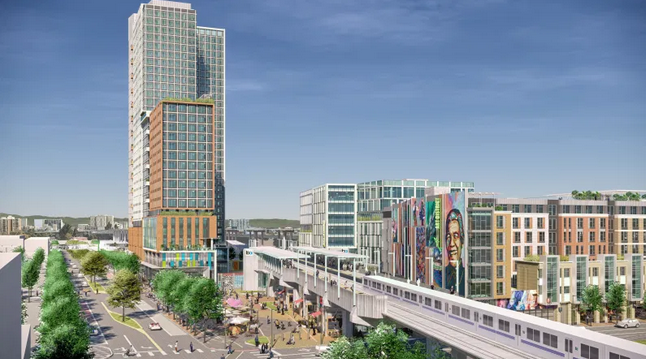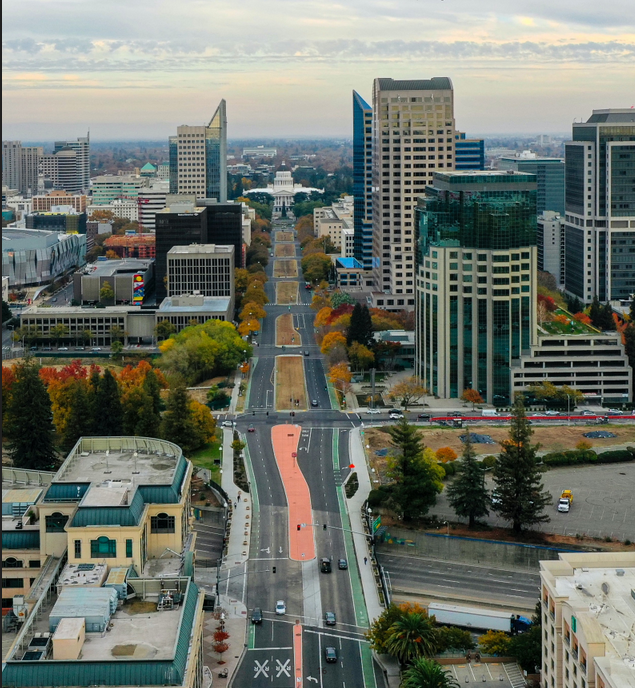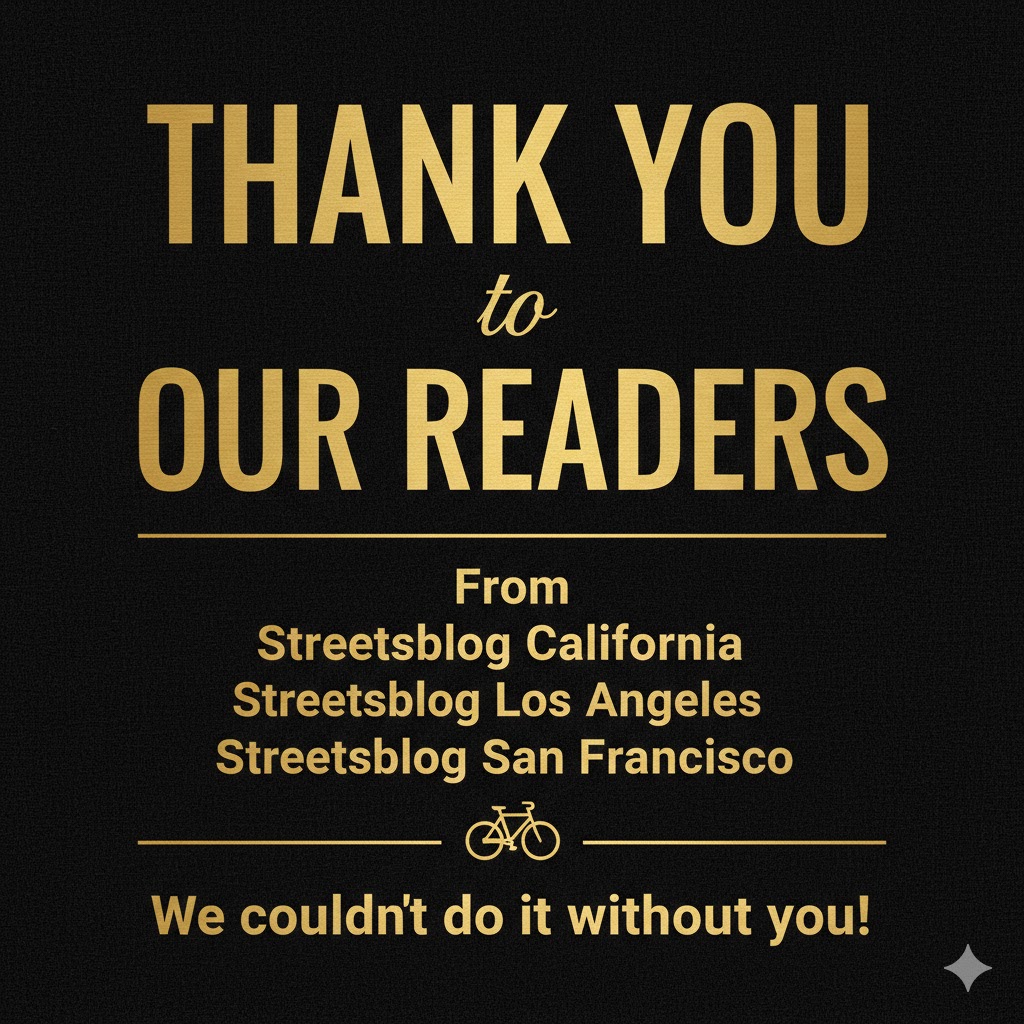Two groups of Regional Early Action Planing (REAP) grants, for $532 million, were awarded by the California Housing and Community Development department (HCD) last week. The grants are referred to as REAP 2.0 because they expand on existing REAP grant programs by looking for ways to integrate housing and climate goals. They also allows more flexibility in using the money, which could be for a range of activities that support infill development, such as planning or non-housing and non-transportation infrastructure.
California has for years studied and discussed the connections between transportation and housing, and has promulgated laws and plans that require regional governments to do more to connect the two - but also rarely gives them either the teeth or the money to do more than plan and wag their fingers at cities that ignore them. These grants are an opportunity for the regions to help local governments meet some of those interconnected goals - for example, in their Sustainable Communities Strategies.
But REAP 2.0 is only a one-time boost, made possible by last year's budget surplus. It is part of the $2 billion "California Comeback Plan" created by budget bill A.B. 140. That means the money must be spent wisely, because there is no guarantee or any real expectation that more money is coming.
Eligible REAP 2.0 projects are required to support three program objectives: reduce vehicle miles traveled, support increasing housing supply at all affordability levels, and "affirmatively further fair housing," which under federal rules means more than simply not discriminate - it means taking meaningful actions to overcome patterns of segregation and foster inclusive communities.
Projects can include housing, planning, infrastructure that supports infill housing, and projects and "shift… travel behavior through reducing driving and increasing transit ridership."
MPO Grants
The vast majority of the grants - 85 percent, about $510 million - were awarded to seven Metropolitan Planning Organizations (MPOs), through a formula based on population and the region's state-defined housing needs. The MPOs are allowed to distribute the funding to cities, counties, and transportation agencies through a process that was approved by HCD.
Los Angeles's regional MPO, the Southern California Association of Governments (SCAG) received the largest of all the grants ($237 million). About $100 million will go to its regional Transformative Partnership Program, with about half of that going to LA Metro. Joe Linton at Streetsblog LA notes that those projects are mostly aimed at reducing vehicle miles traveled; he provides a list of those projects here. The rest of SCAG's award includes $99 million for its Programs to Accelerate Transformative Housing (PATH) and for population-based distributions to cities and counties to help them implement the housing elements of their General Plans. Some of the funding will also support SCAG's Sustainable Communities Program: Civic Engagement, Equity, and Environmental Justice and other planning activities and projects.
Other regions that received REAP grants include:
- Tahoe Regional Planning Agency, which, in addition to a HIT grant (see below), was also awarded over $500K to update regulations to facilitate multifamily development and accessory dwelling units.
- Association of Monterey Bay Area Governments: $9 million for a regional competitive program for "the most high-impact and transformative projects" and for planning and implementing housing throughout the region.
- Madera County Transportation Commission: $2 million to support infill housing along multimodal corridors in the cities of Chowchilla and Madera and the County of Madera.
- Sacramento Area Council of Governments: $32 million for its Green Means Go program, for non-transportation projects in locally adopted Green Zones (priority growth areas).
- San Diego Association of Governments: $39 million for developing affordable housing, establishing an affordable housing trust fund, and other programs including studies and predevelopment for mobility hubs and infill housing proposals.
- Shasta Regional Transportation Agency: $2 million to develop two infill sites for housing affordable to low- and moderate-income households and for infrastructure improvements "to provide more transportation options" in Downtown Shasta Lake.
HIT Grants
Another portion of the grants - about $30 million - was awarded to specific projects that applied directly to HCD. These are supposed to be "Higher Impact Transformative" (HIT) projects in communities "that have demonstrated a commitment to transforming disadvantaged neighborhoods in support of unique, innovative place-based projects."
Oakland, for example, will receive $10 million for work in and around the West Oakland/Mandela BART station. Some of that - $4 million - will be used for planning an infill project containing 140 affordable units. Another $4 million will be used to build new sewer lines for that project and another planned 2,705 units of infill, which will include 178 affordable units plus commercial and retail space. $1.55 million will go towards the 7th Street Corridor project, which will build a "high-quality protected bicycle connection" between the West Oakland BART Station and downtown Oakland, as well as improved pedestrian connection across and along 7th Street and transit improvements such as bus boarding islands, upgraded bus shelters, and queue jump lanes. The remaining $450,000 will provide prepaid transit debit cards through Oakland’s pilot Universal Mobility Program for some residents in West Oakland.
The other HIT grants will go to:
- Rancho Cordova: $4 million for "non-transportation infrastructure improvements" to support transit-oriented development around the Mather Mills Light Rail Station.
- Tahoe Regional Planning Agency: $2.5 million for environmental clearance for infill multifamily developments. Some of the money will also be used to update the region’s development rights and growth management programs "to incorporate equity, address climate change concerns, and facilitate infill development."
- SANDAG: $10 million to build infrastructure along the Trolley Blue line in support of a 483-unit transit-oriented affordable and middle-income housing project, to convert an alleyway into a multimodal corridor linked to the trolley station, and to establish the Avanzando Community Land Trust to provide rent-to-own opportunities for households with incomes that are 30-60 percent of the area median income.
- Bay Area Rapit Transit (BART): $4 million to establish a revolving loan fund to finance predevelopment activities for affordable housing projects on BART-owned land. The first loan will be made to the Lake Merritt/Chinatown transit-oriented development senior affordable housing project, which is part of a larger place-based planning strategy in the area.
One last portion of the grants, another $30 million for tribal and rural areas, is expected to go out some time this coming fall.






